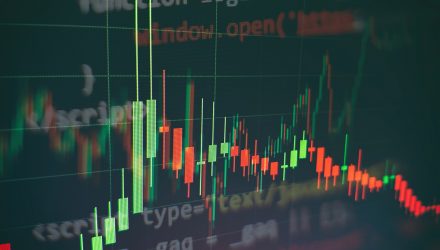Emerging markets have rallied sharply after the the broad market pullback, and while many investors look to equities when considering ETFs, fixed-income investors should also consider opportunities in developing market debt and related exchange traded funds.
The rally in emerging market debt has pulled down yields significantly as bond prices increased, with the yield spreads between emerging market debt and U.S. investment-grade bonds tightening as a result. Nevertheless, the BlackRock strategists argued that emerging market debt yields remain attractive on an absolute and relative basis over the long-term.
Here are the 5 Best Fixed Income Emerging Market ETFs of this year, as of June 27, 2019:
1. The Invesco Emerging Markets Sovereign Debt ETF (PCY) is based on the DBIQ Emerging Market USD Liquid Balanced Index. The Fund will normally invest at least 80% of its total assets in securities that comprise the Index (the “Index”). The Index tracks the potential returns of a theoretical portfolio of liquid emerging markets US dollar-denominated government bonds issued by more than 20 emerging-market countries. The countries in the Index are selected annually pursuant to a proprietary index methodology. The Fund and the Index are rebalanced and reconstituted quarterly and are up 12.28% this year with an expense ratio of 0.50%.
2. The JPMorgan USD Emerging Markets Sovereign Bond ETF (JPMB) is designed to provide emerging markets dollar bond exposure with more stable credit exposures through time. The fund tracks the JPMorgan Emerging Markets Risk-Aware Bond Index which is comprised of U.S. dollar-denominated sovereign and quasi-sovereign emerging markets debt securities. JPMB utilizes a rules-based, proprietary methodology that filters for liquidity and country risk and allocates risk across credit rating. The ETF employs optimization techniques to minimize tracking error to the underlying index. JPMB is currently up 10.83% YTD and has an expense ratio of 0.64%.
3. The iShares J.P. Morgan USD Emerging Markets Bond ETF (EMB) seeks to track the investment results of an index composed of U.S. dollar-denominated, emerging market bonds. The fund offers exposure to U.S. dollar-denominated government bonds issued by emerging market countries, and provides access the sovereign debt of 30+ emerging market countries in a single fund. EMB is currently up 10.67% YTD and has an expense ratio of 0.39%.
4.The iShares Emerging Markets High Yield Bond ETF (EMHY) seeks to track the investment results of an index composed of U.S. dollar-denominated, emerging market high yield sovereign and corporate bonds. The fund offers exposure to U.S. dollar-denominated high yield bonds issued by governments and corporations in emerging market countries. The fund offers access to 200+ emerging market high yield bonds in a single fund. EMHY is currently up 9.59% YTD and has an expense ratio of 0.50%.
5. The Vanguard Emerging Markets Government Bond ETF (VWOB) attempts to track the performance of Bloomberg Barclays USD Emerging Markets Government RIC Capped Index. The ETF provides a convenient way to get additional exposure to emerging market government bonds. The fund maintains a dollar-weighted average maturity consistent with that of the index, while using a passively managed approach, using index sampling. VWOB is currently up 9.41% YTD and has an expense ratio of 0.30%.
Emerging Markets Relative Value ETF Plays
For investors looking for the continued upside in emerging market assets, whether driven by a weakening USD or continued developments around trade, the Direxion MSCI Emerging Over Developed Markets ETF (NYSEArca: RWED) offers them the ability to benefit not only from emerging markets potentially performing well, but from emerging markets outperforming developed markets.
Conversely, if investors believe that resolutions to the big issues impacting sentiment today are in motion, the Direxion MSCI Developed Over Emerging Markets ETF (NYSEArca: RWDE) provides a means to not only see developed markets perform well, but a way to access a convergence/catch-up in performance of DM relative to EM, a spread that has clearly widened over the past 6 months.
For more investing trends, visit ETFtrends.com.
For more investing trends, visit ETFtrends.com.

